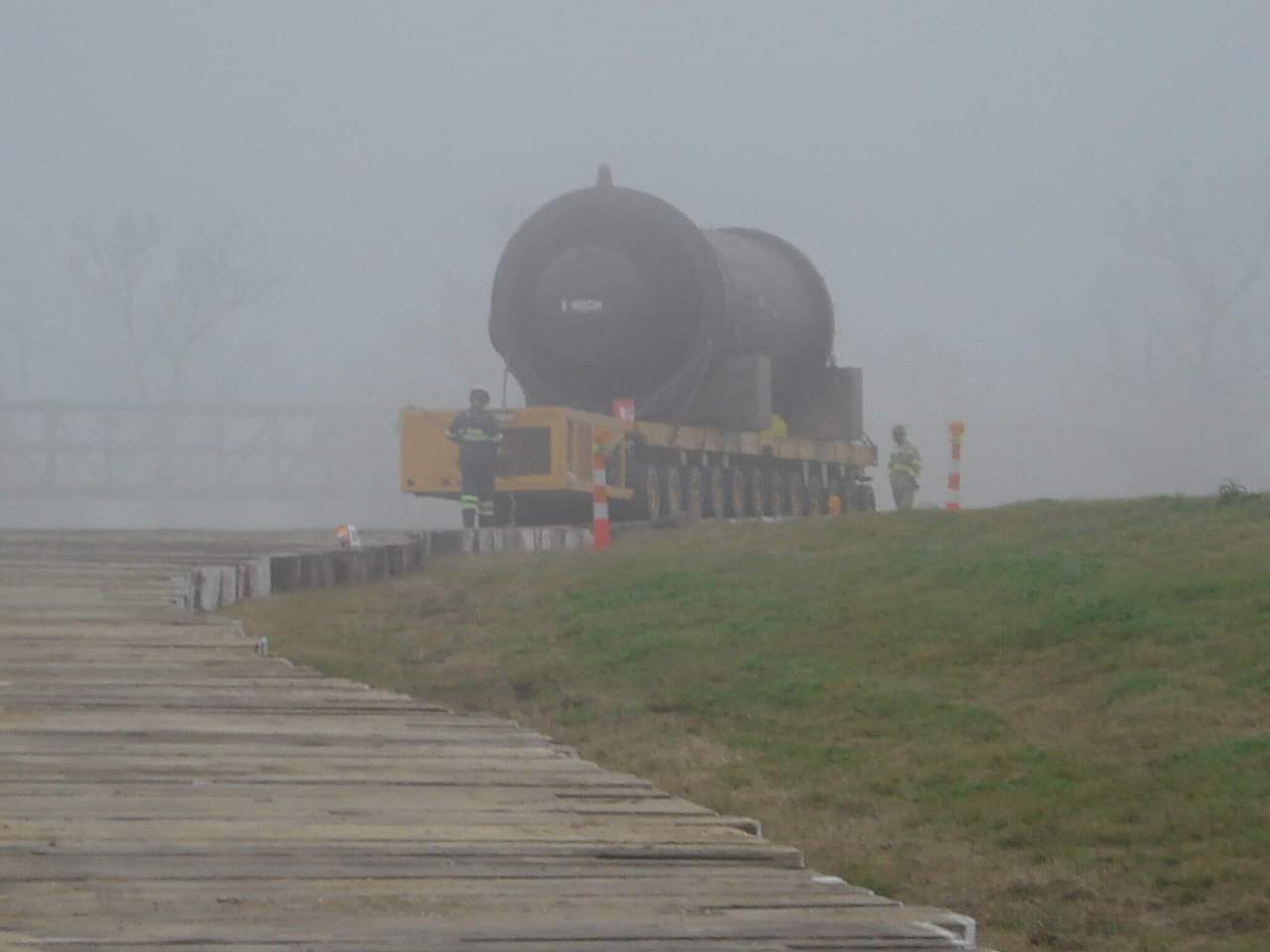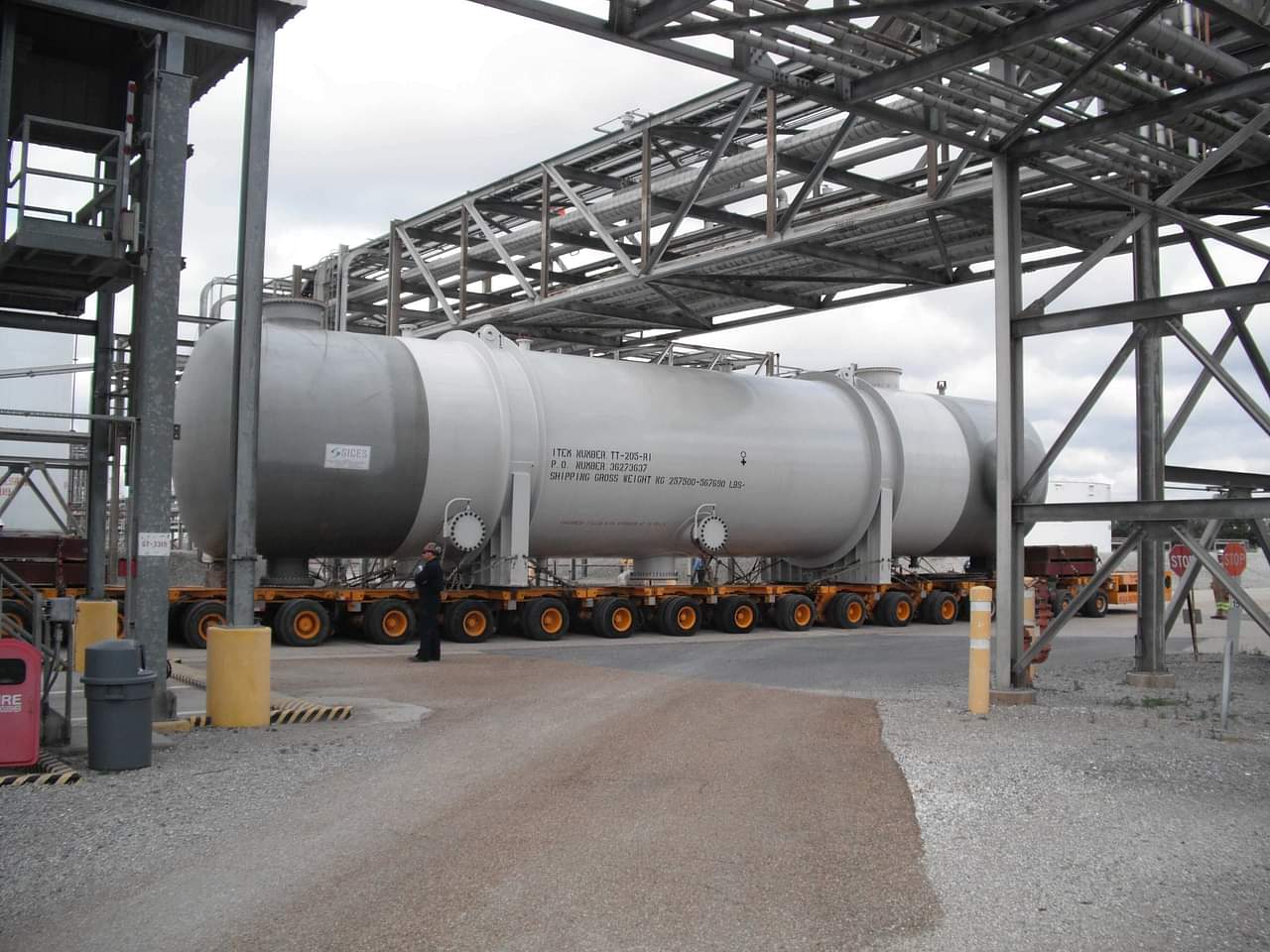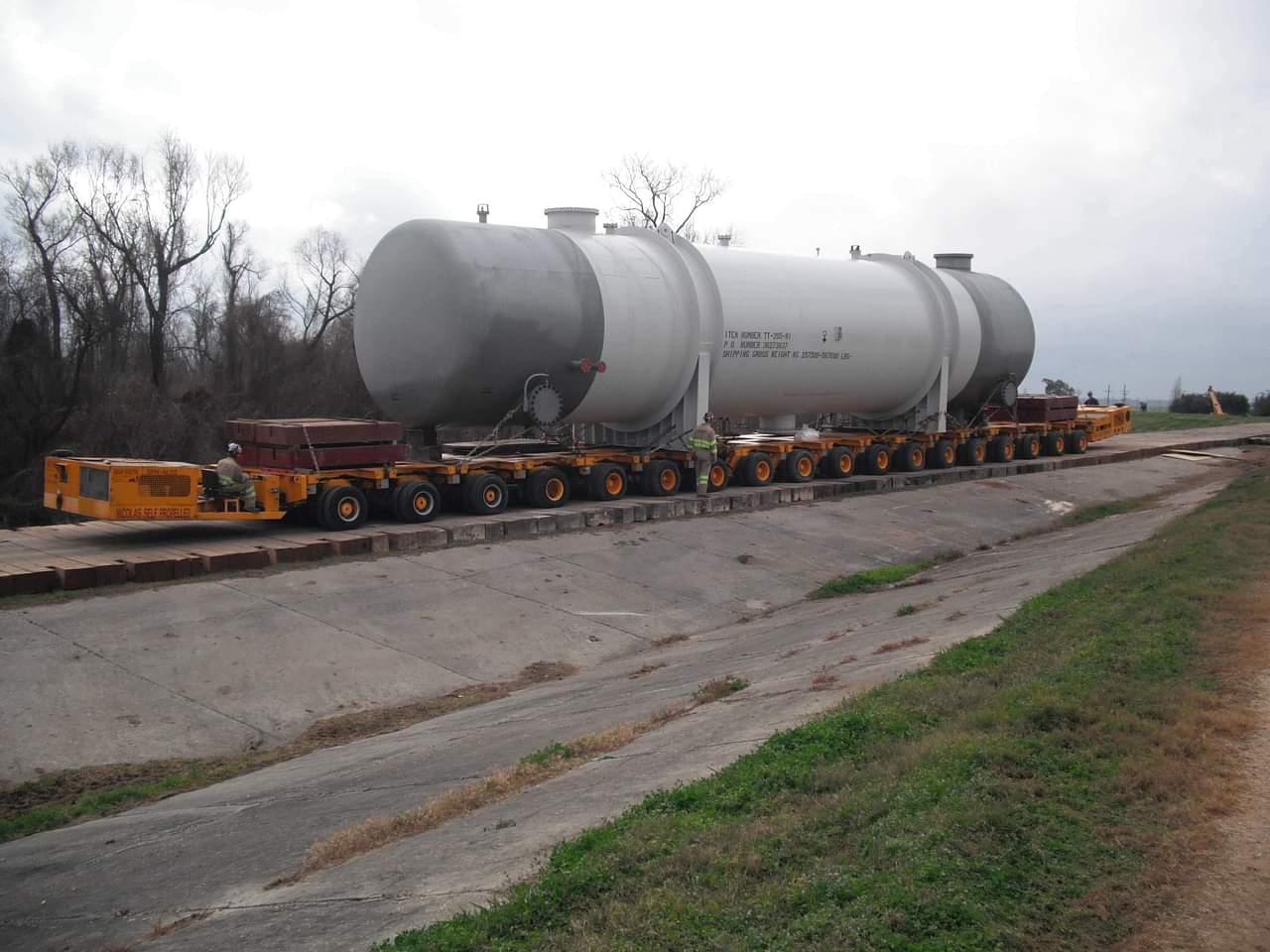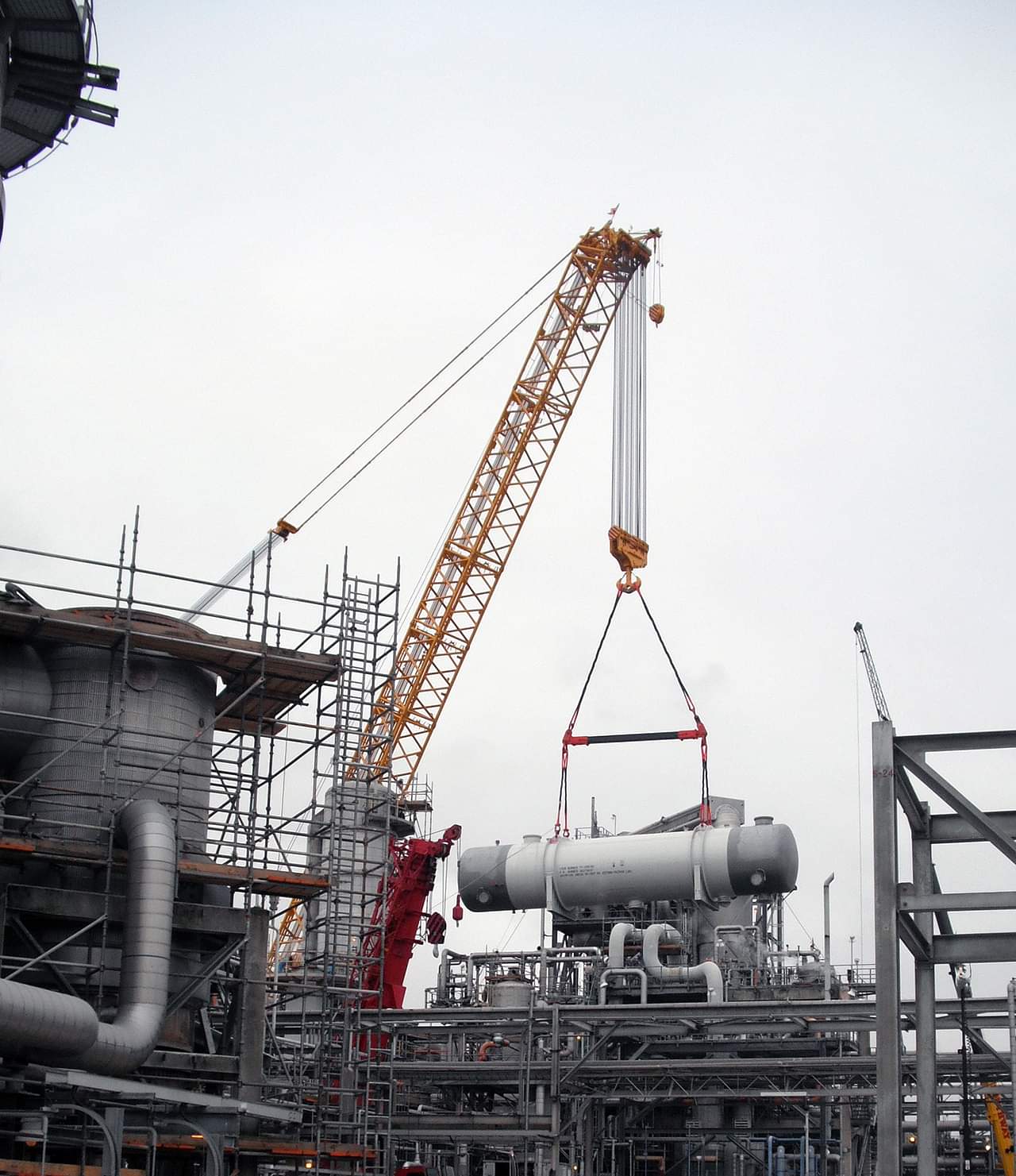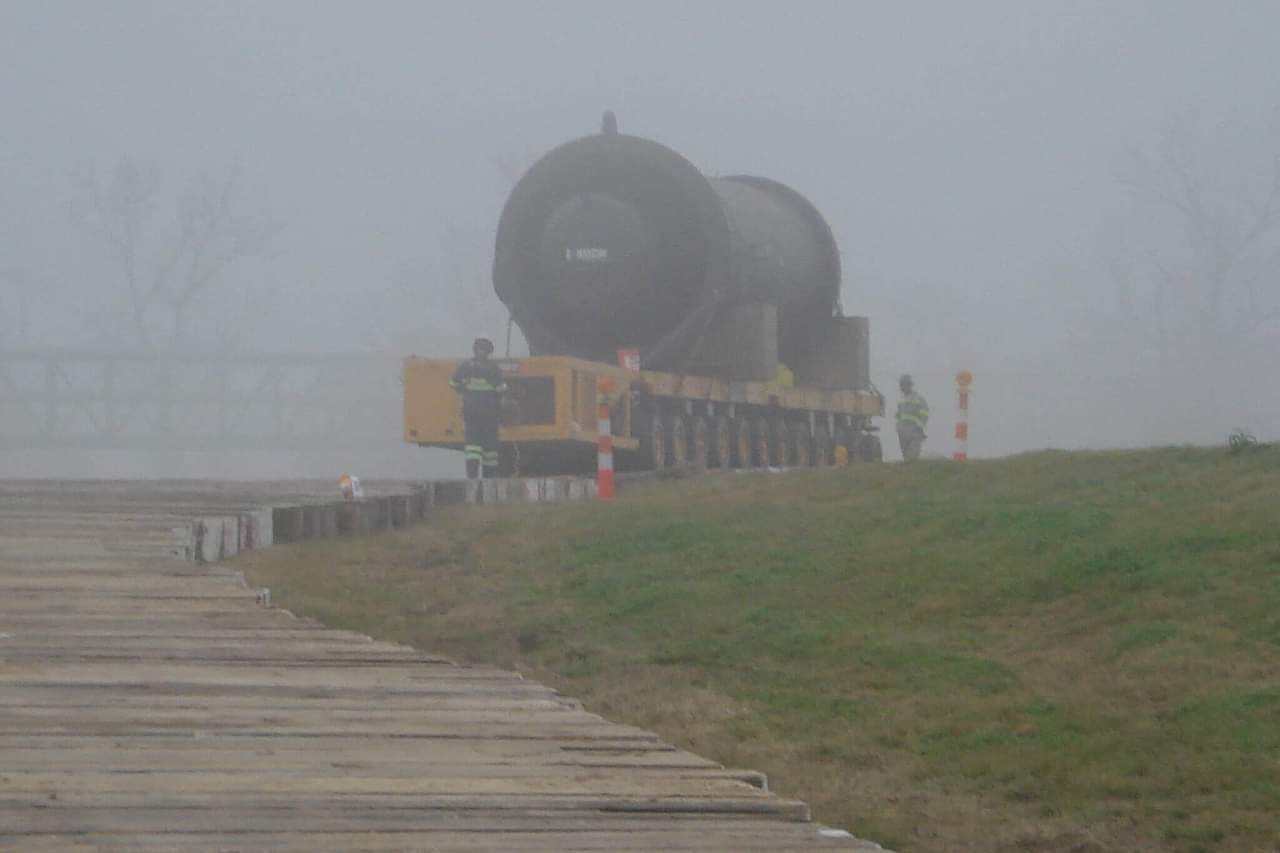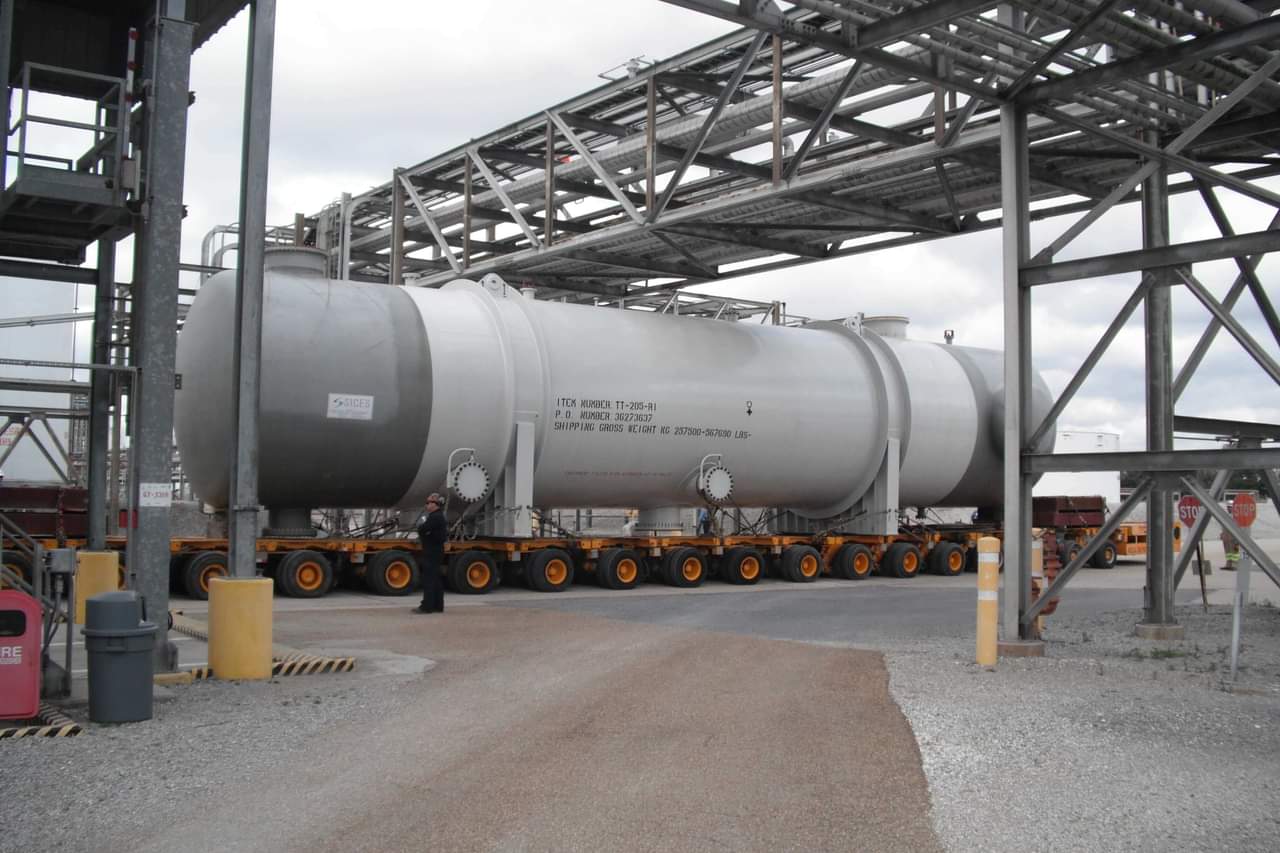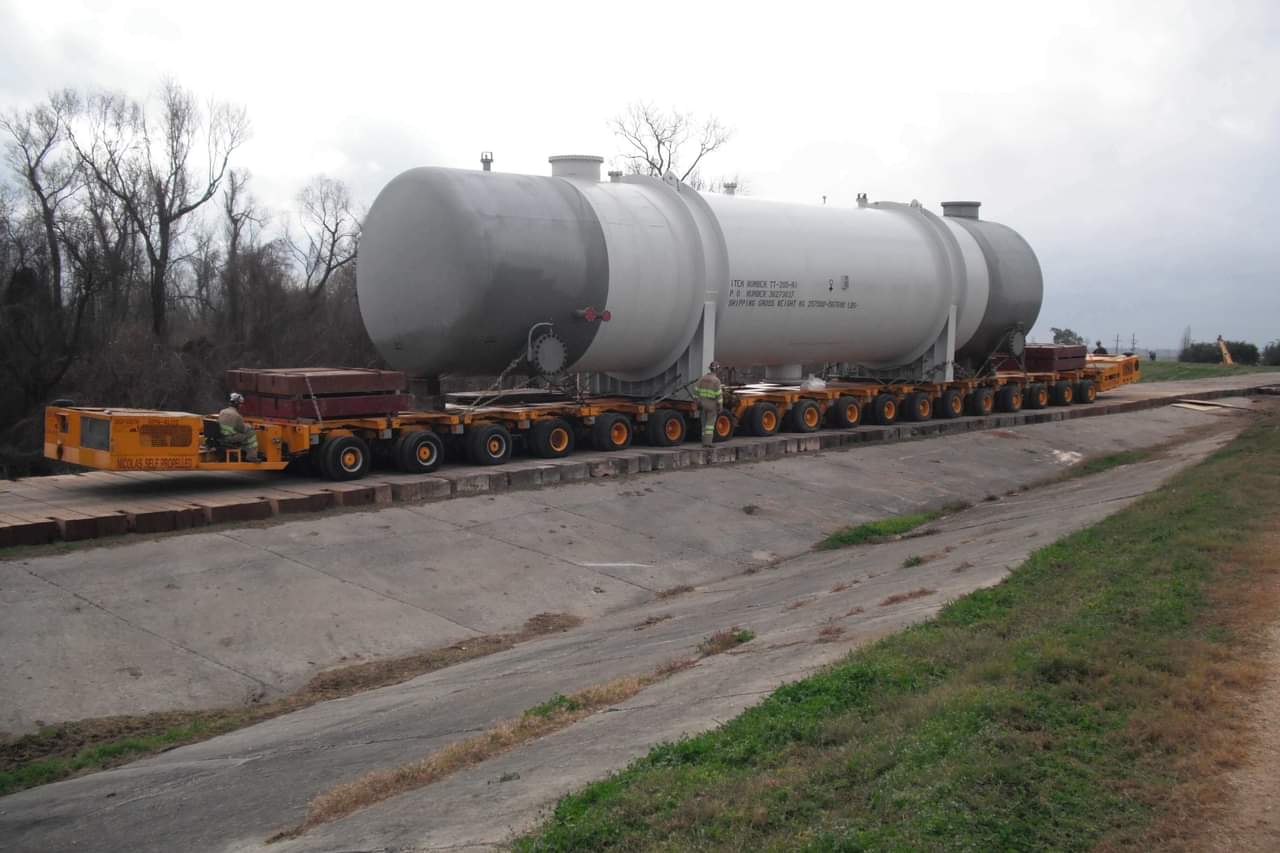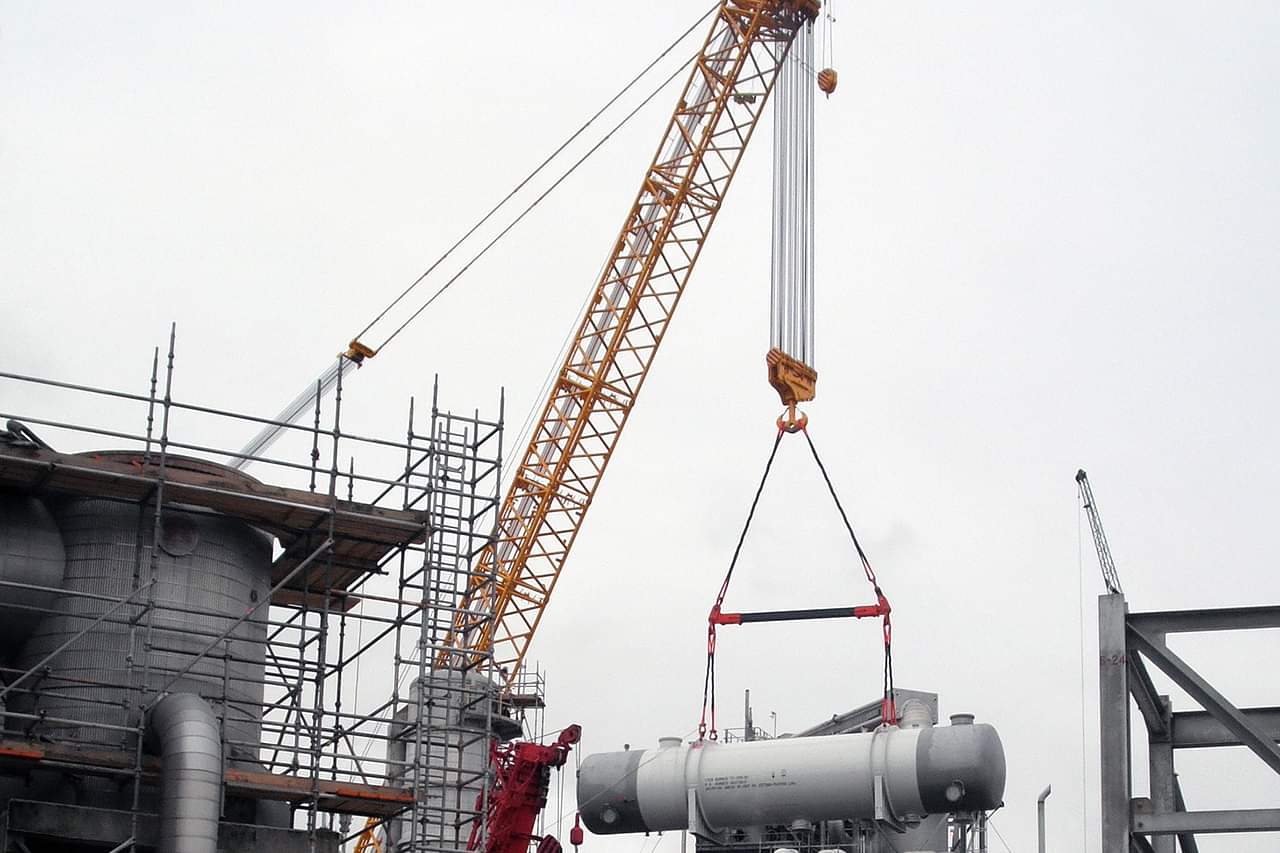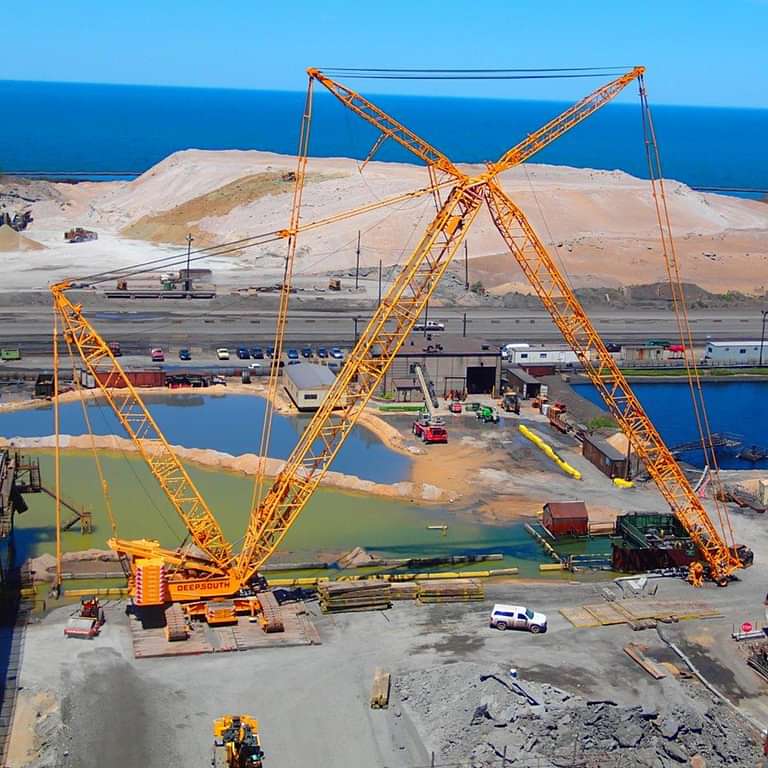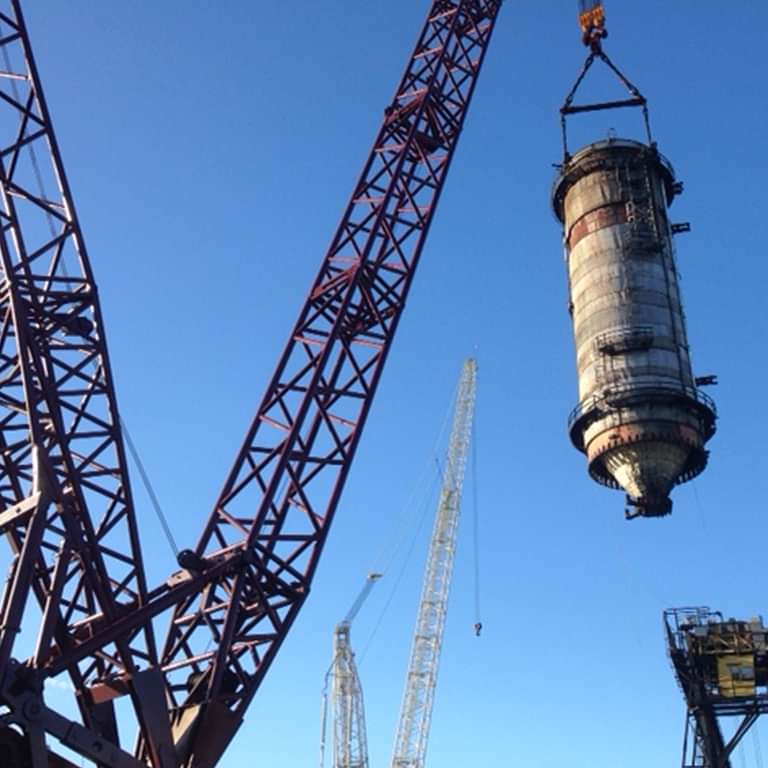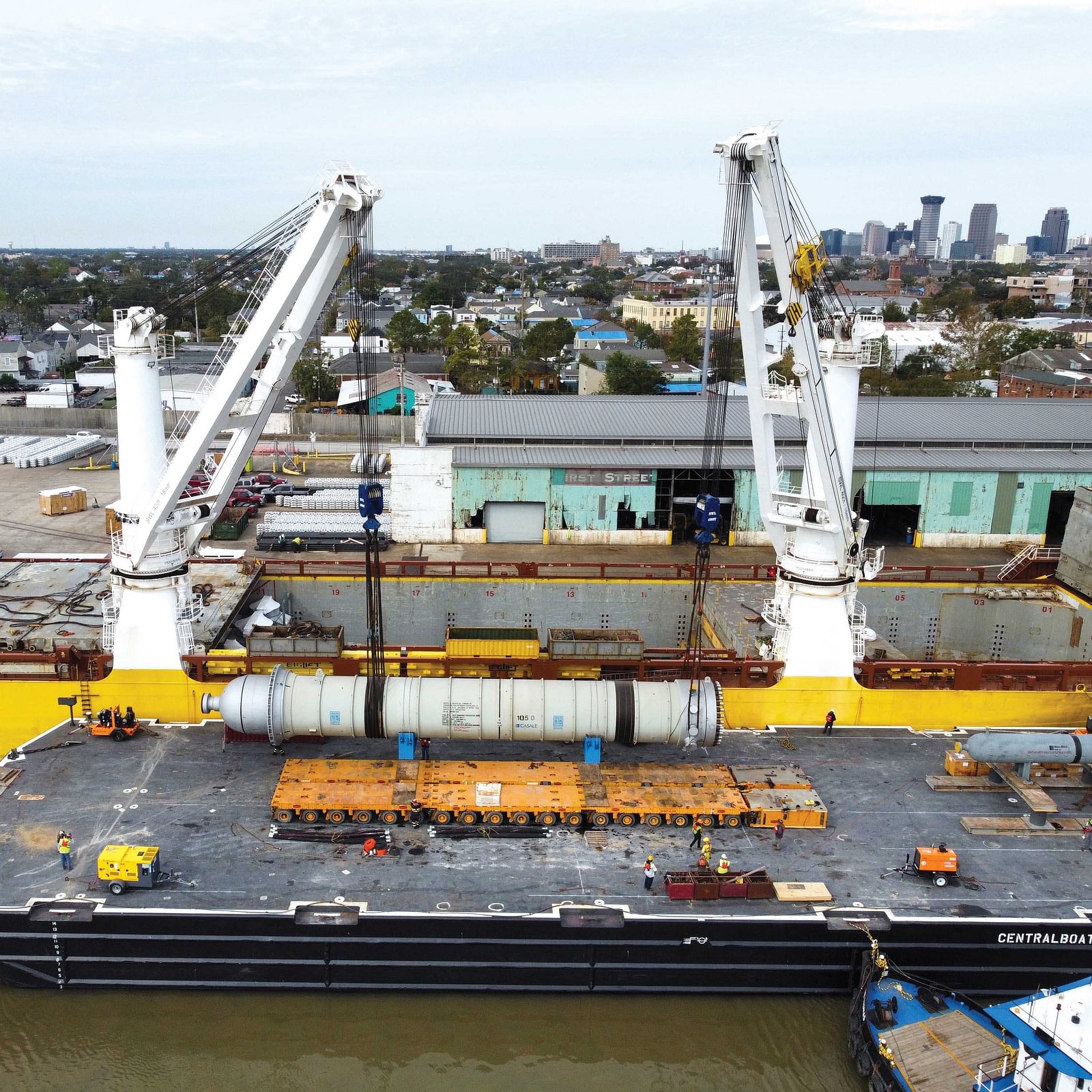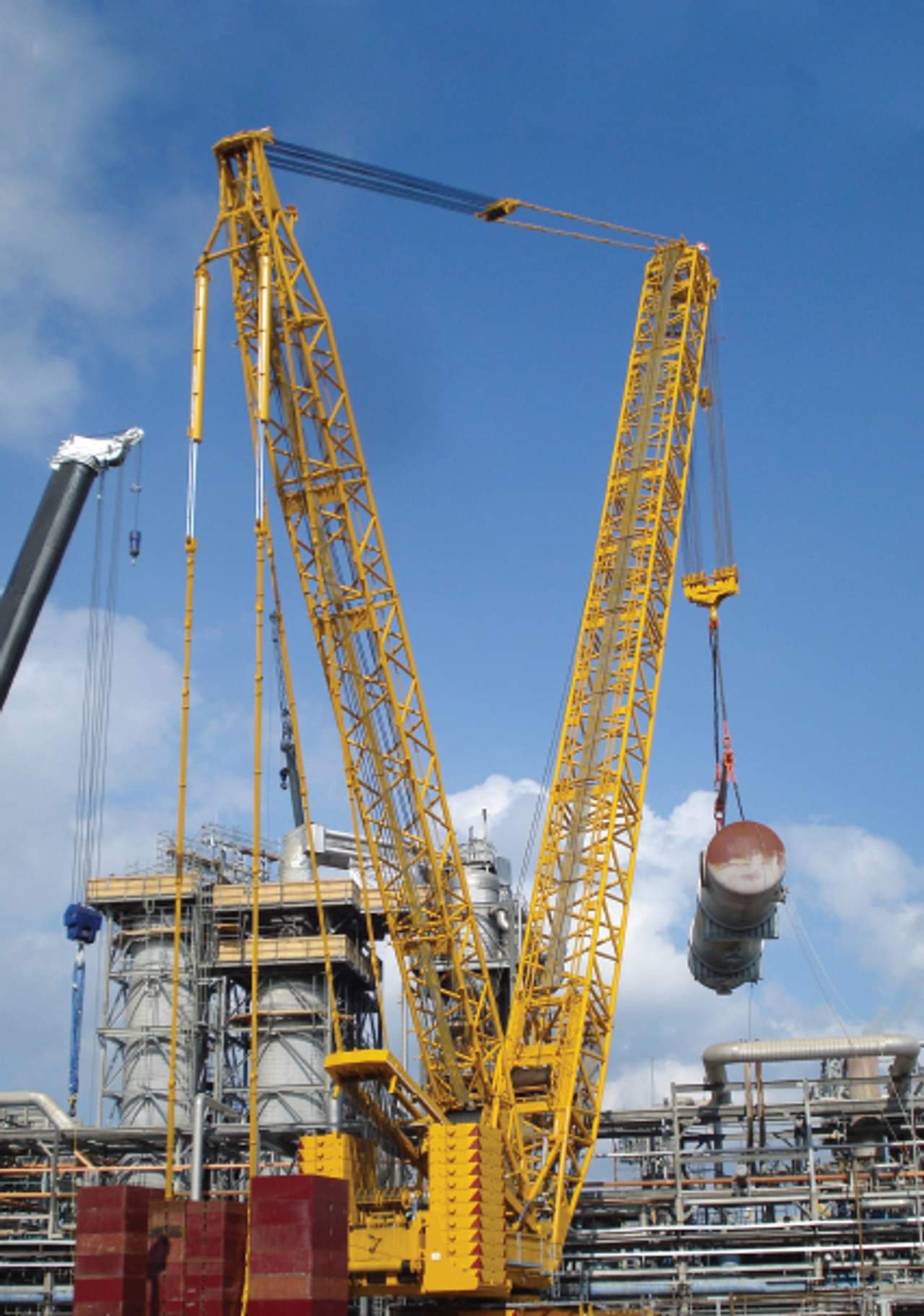
Project Details
When the owner was ready to install new exchangers in its styrene monomer production facility, the company turned to Deep South Crane & Rigging. Positioning the exchangers into their final position required agile maneuvering of the equipment under a pipe rack with less than a two-inch clearance and throughout the remainder of the plant. Deep South is one of the few firms with such capability, with the added benefit of its new Terex CC-6800-1 crane not encroaching on work elsewhere in the plant.
“This was a very specialized transportation and lift job. We had the best technical solution for getting under their pipe rack, and the crane selection was such that it didn’t disrupt other areas of their plant.”
Deep South completed extensive surveying to ensure the largest of the vessels - a 300t exchanger measuring 74' in length and 17'6" in diameter - could pass underneath a low-lying pipe rack. The second exchange weighed 120 tons. "This was a very specialized transportation and lift job. We had the best technical solution for getting under their pipe rack, and the crane selection was such that it didn’t disrupt other areas of their plant,” says Deep South project manager Thad Lentz. A final decision was made to use 14-lines of Nicholas SPMTs to move the vessels into place.
But after months of planning, a more arduous challenge arose: The Mississippi River itself. When it came time to receive the exchangers’ barge at the port, the Carrollton gauge in New Orleans registered the river’s depth at one foot — a historic low far below the 7- to 11-foot norm. The U.S. Army Corps of Engineers wouldn’t grant a permit to offload the exchangers under those conditions, and the river wasn’t expected to rise anytime soon.
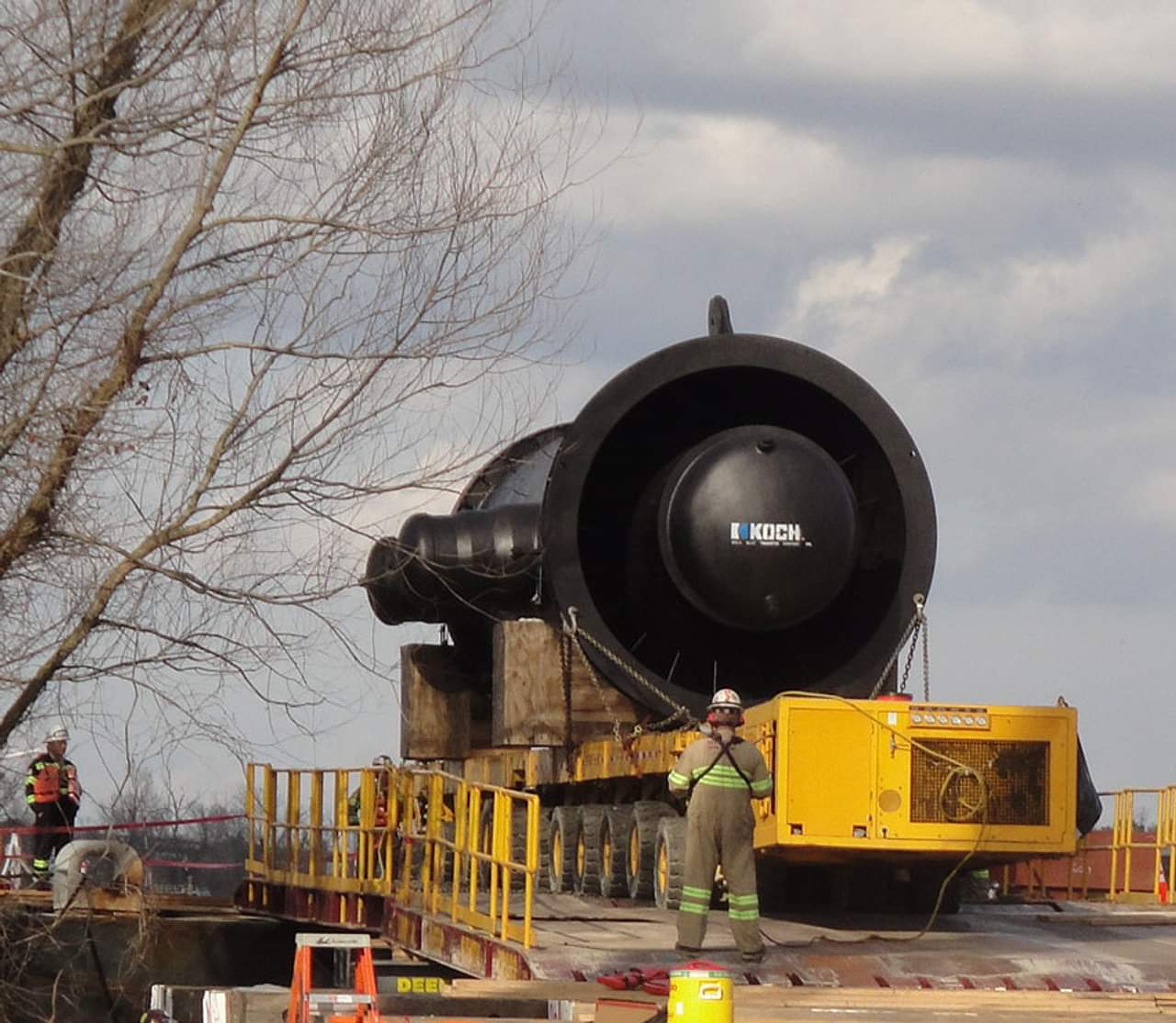
“Getting a permit isn’t as difficult when the river is a normal level,” Lentz says. “But when it dropped down to one foot, the Army Corps of Engineers told us, ‘You are not offloading. Period.’ That wasn’t an option for us. And it wasn’t an option for our client. They had to complete their turnaround, and they had to have that exchanger.”
In short order, Deep South conducted a new stability analysis of the levee and designed a solution to safely offload the equipment, meet the Corps’ requirements, and secure the permit as quickly as possible. Deep South installed 2,000 feet of reinforcement mats along the entire levee. The team then assembled a customized ramp, which was designed and built at its fabrication facility in Baton Rouge, to reach the barge. The permit to offload in low water was granted in mid-January of 2013, delaying the owner’s turnaround by just two weeks. The exchangers were in place in 20 days.
Working with the Army Corps of Engineers and its client to provide solutions around continuously changing river levels is part of Deep South’s expertise. Its team overcame the challenge, minimizing months of potential delays for the client.
